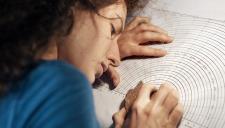Harvard edition North America
248 pages
Palm mats and pilgrim tokens, manuscript illuminations and church frescoes, gold and enamel reliquaries and papier-mâché figurines, Russian icons and Mexican murals: What makes these works of art Christian?
And what, as such, distinguishes them from other works? These are the questions at the center of this book, which is at once a sumptuously illustrated survey of Christian art over time and across the globe and a probing study of what “Christian art” really means, how it functions, where it arises, and whom it serves.
Rowena Loverance draws extensively on the vast international collections of the British Museum, with its remarkable examples of Christian art in the fourth-century Roman empire, the meeting of Eastern and Western art during the Crusades, Christian missionary art and its reception in sixteenth-century Africa, India, and Japan, and twentieth-century Christian popular art from Latin America and Oceania. The Museum’s collections of decorative arts yield original and lesser-known Christian iconography, allowing the author to show how Christian and other artists have responded to a variety of visual traditions. Within the European convention, the book considers the assaults of post-Renaissance scientific and philosophical discoveries and concludes with an assessment of the current state of Christian art at the beginning of the twenty-first century.
Rowena Loverance is the head of e-learning at the British Museum, a Visiting Research Fellow at King’s College London, and the coeditor of the Bulletin of British Byzantine Studies











